In this article, I’ll talk about the best dispersed camping spots near Grand Canyon National Park and how to find them.
Extensive geological history, altitudes spanning from 2,000 feet above sea level to over 8,000 in some parts, millions of curious visitors annually, and cute but deceptively aggressive rock squirrels (that you should not feed under any circumstances) are what make this national park one of the most unique and popular tourist destinations in the US.
Its majestic red rock formations, a testament to this region’s rich geological history, combined with the endless exploration opportunities and fantastic photo-ops, make this place full of excellent camping options, too.
Overview of Grand Canyon Dispersed Camping
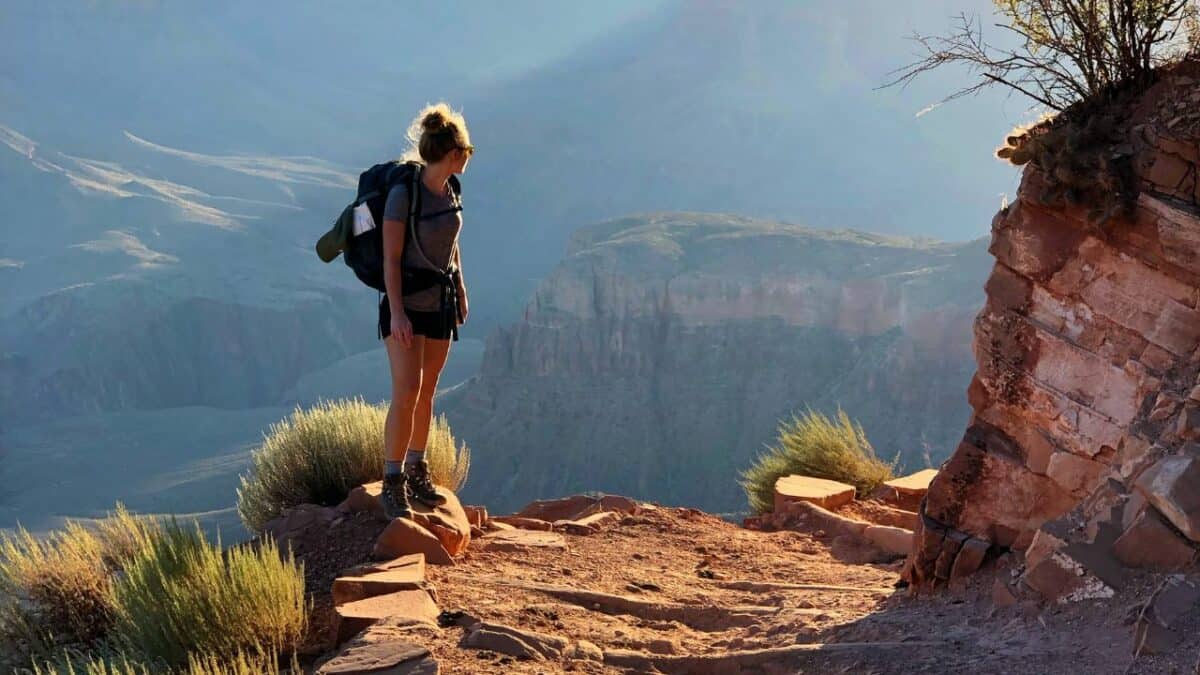
Representing the go-to staple for desktop images for Windows, a favorite among tourists from across the globe, and a complete mystery to geologists and laypeople alike, the Grand Canyon is one of the best dispersed camping areas in Arizona.
The Grand Canyon, home to rattlesnakes and a few mules, is also home to 208 humans (plus minus the tourists you encounter), all of whom live in the remote village of Supai, the most remote community in the continental United States.
But getting this deep into the canyon won’t mean finding excellent free camping spots.
Since the Grand Canyon is such a significant tourist attraction, dispersed camping is only possible near the outskirts of the National Park itself. That said, the views you can get around these parts are similar to the ones from the park proper, so setting up a tent here is more than worth the trouble of getting to this part of Arizona.
Other than just camping, Grand Canyon National Park is also well-known for its adventurous mule-riding treks and rafting down the mighty Colorado river. Once you’ve had enough escapades for the day and hit your sleeping bag, you can enjoy one of the best night skies in the world, thanks to this region’s massive stargazing potential.
Dispersed campgrounds around the Grand Canyon National Park follow a two-pronged approach – they broadly follow the north and the south rim of the park’s borders.
In the sections below, I’ll describe the best-dispersed camping spots in both locations.
South vs. North Rim – Where to Camp?
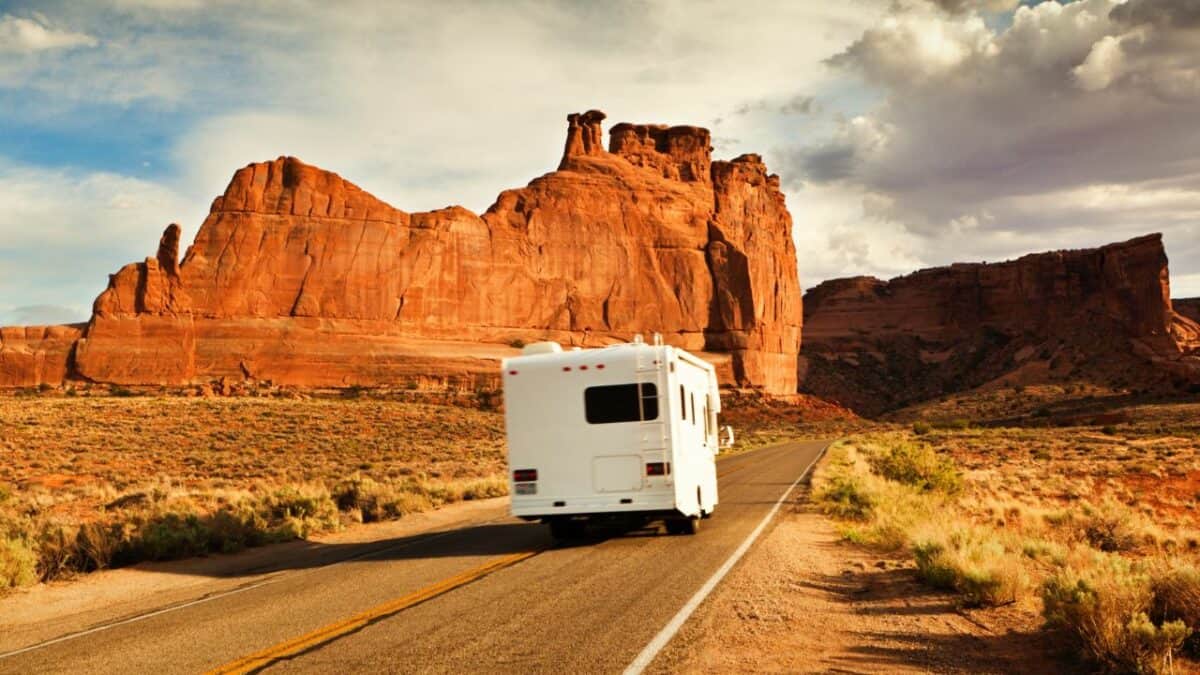
These two broad locations will give you a slightly different experience of the Grand Canyon. Generally speaking, the South Rim area is more tourist-friendly, with more settlements, paved roads, and RV-friendly campgrounds.
On the other hand, the North Rim sits at a higher altitude and is more difficult to approach but offers fantastic views of the Grand Canyon and an overall more private camping experience.
Here are some of the essential features of the South Rim:
- Easily accessible from several large cities – perfect for a day trip
- The size and magnitude of the Grand Canyon are more visible from the South Rim
- Plenty of restaurants, cafeterias, gift shops, lodges, and stores. Perfect for families with kids
- Most locations are open all year round
- The South Rim features more tours, helicopter rides, mule rides, and other scheduled outdoor activities
These are the essential features of the North Rim:
- Stays notably more relaxed than the South Rim during the summer – primarily because of the many trees providing plenty of shade
- A more relaxing and private camping atmosphere
- Plenty of exciting hiking opportunities
- A much higher elevation than South Rim means cleaner air and fantastic views of the canyon.
You can learn more about the differences between these two parts of the Grand Canyon on the Grand Canyon Visitor Center website at this link.
South Rim Dispersed Campgrounds
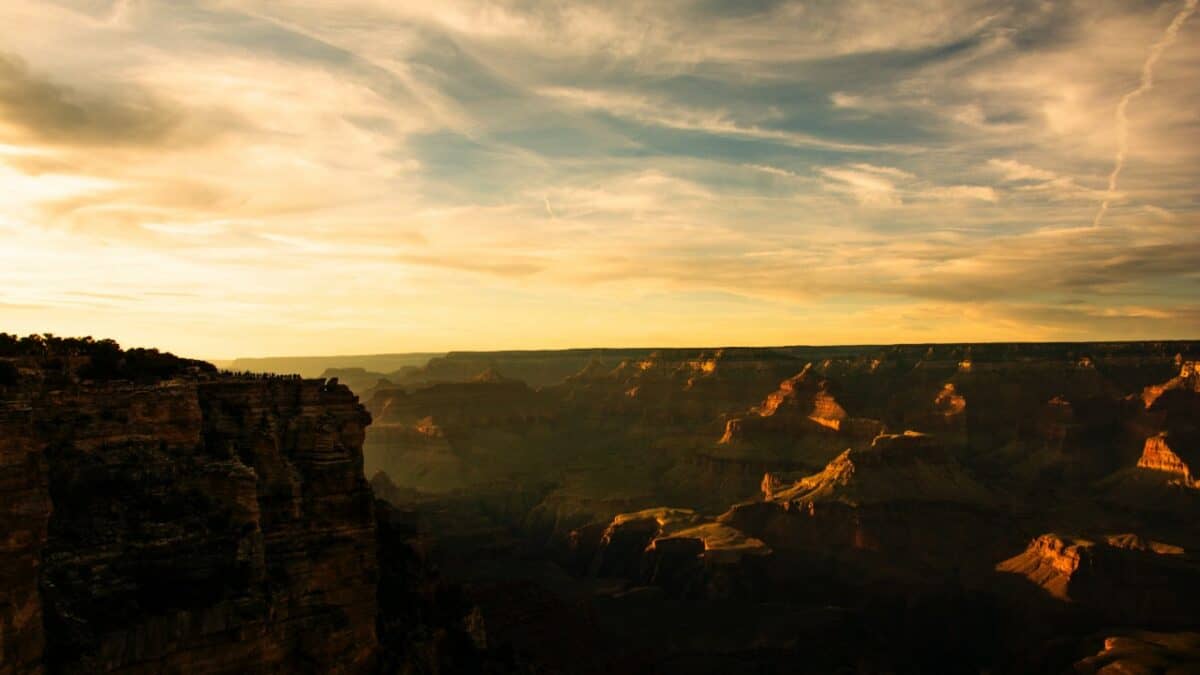
The North Rim of the Grand Canyon represents the rough, outdoorsman’s region that you only tackle if you have your hiking boots on and a 4×4, the South Rim is much more approachable and family-friendly.
Other than providing multiple excellent campgrounds with plenty of space for RVs, tents, and vehicles, the entire South Rim area offers a lot more hiking opportunities, sightseeing, and lodging.
The Grand Canyon Village, for example, represents a primary go-to place for many visitors, whether they arrive here for dispersed camping, glamping, or a hiking expedition. In this village, you can buy supplies and souvenirs and learn more about the history of this fantastic place.
Speaking of hiking, the South Rim of the canyon features some of the most exciting hiking trails in the US – Hermit Trail, South Kaibab Trail, Bright Angel Trail, Grandview Trail, and many others.
Compared to the North Rim campgrounds, the ones located along the South Rim are more approachable, more numerous, and generally closer to supplies and the nearby Entrance Station.
In the passages below, I’ll describe the five best campgrounds along the South Rim of the Grand Canyon.
Forest Service Road 688
- Map
- Toilets: No
- Water availability: No
- Visitor frequency: Busy
- Distance to the Grand Canyon South Entrance: 5.4 miles
Starting off my list of South Rim campgrounds, Forest Service Road 688 must be included as one of the best overall camping options. Whether you’re a tent camper or prefer to camp onboard your RV, you can rest assured that you will find ample space along forest service road 688.
There are approximately 20 campsites here. Thanks to the excellent condition of the road, you can approach it onboard a large campervan rig, in your passenger vehicle, or on foot carrying a large backpack – it’s your call.
Another central point of interest regarding this campground is that it’s only about 10 miles from the Grand Canyon Village. You can get Grand Canyon brochures, souvenirs, food, water, maps, and plenty more here.
The proximity of FS Road 688 to the Grand Canyon Village also means a high visitor frequency, so expect to camp next to other vehicles and people when you arrive at this location – especially if you do so during the peak season.
Last but not least, one of the reasons many campers and also hikers come to this campground is its proximity to major local points of interest, such as the fantastic lookout area called Mather Point and the web of hiking trails called the South Rim Trail.
Forest Service Road 302
Coconino Rim Road
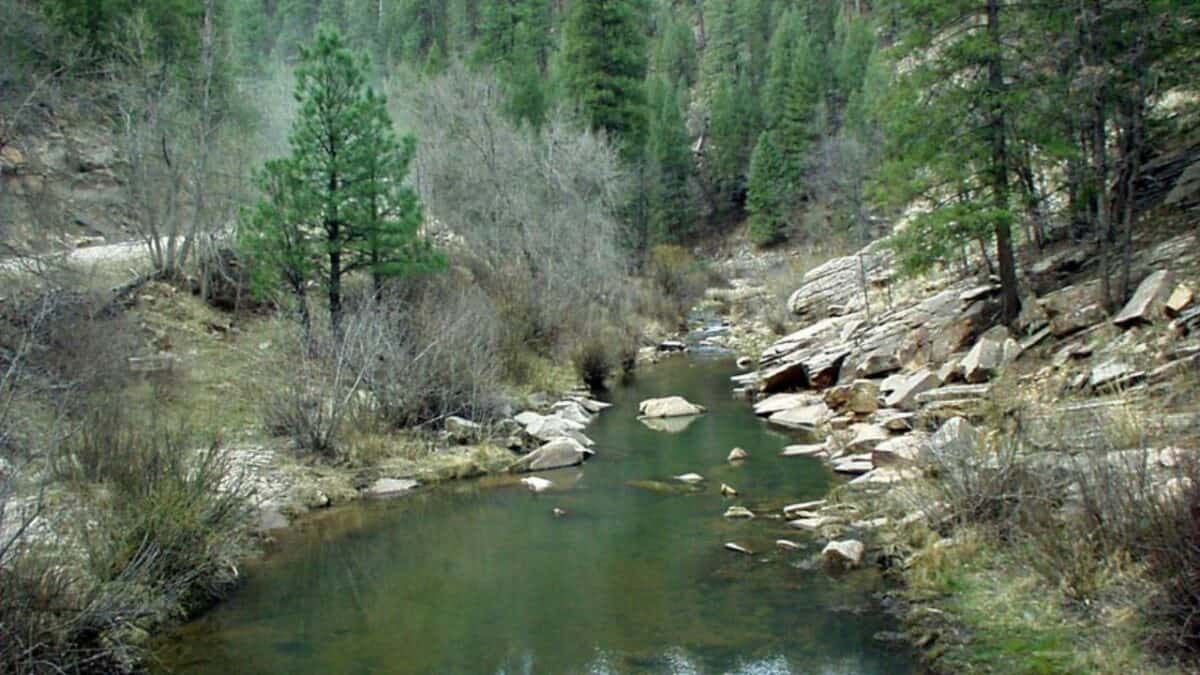
- Map
- Toilets: No (pit toilets are available at Grandview Lookout Tower, though)
- Water availability: No
- Visitor frequency: Busy
- Distance to the Grand Canyon South Entrance: 15.5 miles
Representing a curious anomaly among the dispersed campsites along the Grand Canyon, the Coconino Rim Road is a place that you can only approach from within the National Park. For this reason, Coconino is as close as you can get to free camping in the Grand Canyon National Park as possible.
Coconino Rim Road is a busy camper’s respite area en route to some essential points of interest. Hikers attempting to tackle the challenging (but immensely rewarding upon completion) Grandview Trail routinely stop by Coconino to have a rest and possibly prepare psychologically for the upcoming trek.
On the other hand, there’s the Grandview Lookout Tower.
Initially built by the Civilian Conservation Corps, out of steel and not much else, with two small adjacent cabins for the folks manning the lookout, this tower served (and still does) as an early fire detection station.
Nowadays, though, it’s also a significant tourist attraction, with a fair deal of tourists heading for this location also stopping by the Coconino Rim Road pullout.
The closest source of supplies and amenities would be in Grand Canyon Village, so arriving here fully self-sufficient is a must.
For those who are in search of an alternative that’s a bit closer to a more metropolitan area, free camping near Phoenix can offer a perfect contrast to the Coconino Rim Road experience.
Long Jim Loop
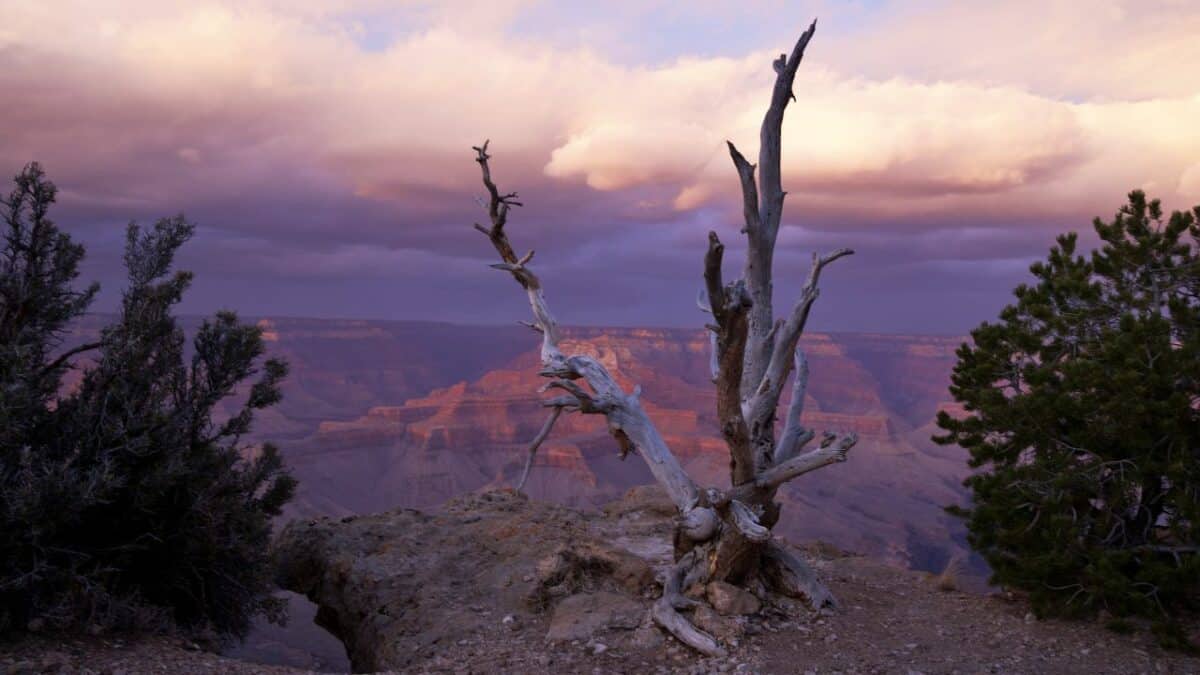
- Map
- Toilets: No
- Water availability: No
- Visitor frequency: Busy
- Distance to the Grand Canyon South Entrance: 1.4 miles
Sitting just behind the small South Rim town of Tusayan, Long Jim Loop is a campground that may offer the most outdoorsy experience, nor is it the most private place to pitch your tent, but that nevertheless offers a great starting point for exploring the vast South Rim of the Grand Canyon.
The hustle and bustle of the nearby roads and the settlement itself will detract from the camping experience. But the location is still fantastic —getting supplies while at this campground is a short walk to the grocery store in the town.
Another short walk from the campground, you can reach Grand Canyon Shuttle Park and Ride – a place where you can take a bus to anywhere you want around the South Rim (As long as you don’t eat or drink while onboard a bus or bring pets along for the ride).
One thing that Long Jim Loop misses is a water source. Considering the high temperatures around these parts during the peak summer season, it is essential to arrive here self-sufficient when it comes to your water supplies.
Forest Service Road 306
- Map
- Toilets: No
- Water availability: No
- Visitor frequency: Moderate
- Distance to the Grand Canyon South Entrance: 5.1 miles
Forest Service Road 306 campground sits opposite FS Road 688.
Since this campground shares much of the same terrain and environment as campground 688, with only a tiny road splitting them, much of the camping experience at one of the sites here mirrors that of camping on Road 306.
One thing that you should take into consideration, however, is that at Forest Service Road 306, you get a bit more privacy. While the road itself can get a tad dodgy here and there, it can accommodate most rigs most of the time.
So, whether you plan to arrive here in a 4×4 Subaru, or a giant campervan with an additional trailer, you should be able to access this campground all the same.
That said, for more peace, you’ll have to venture a bit farther down the road. The farther you go, the fewer campers and distractions you will encounter.
North Rim Dispersed Campgrounds
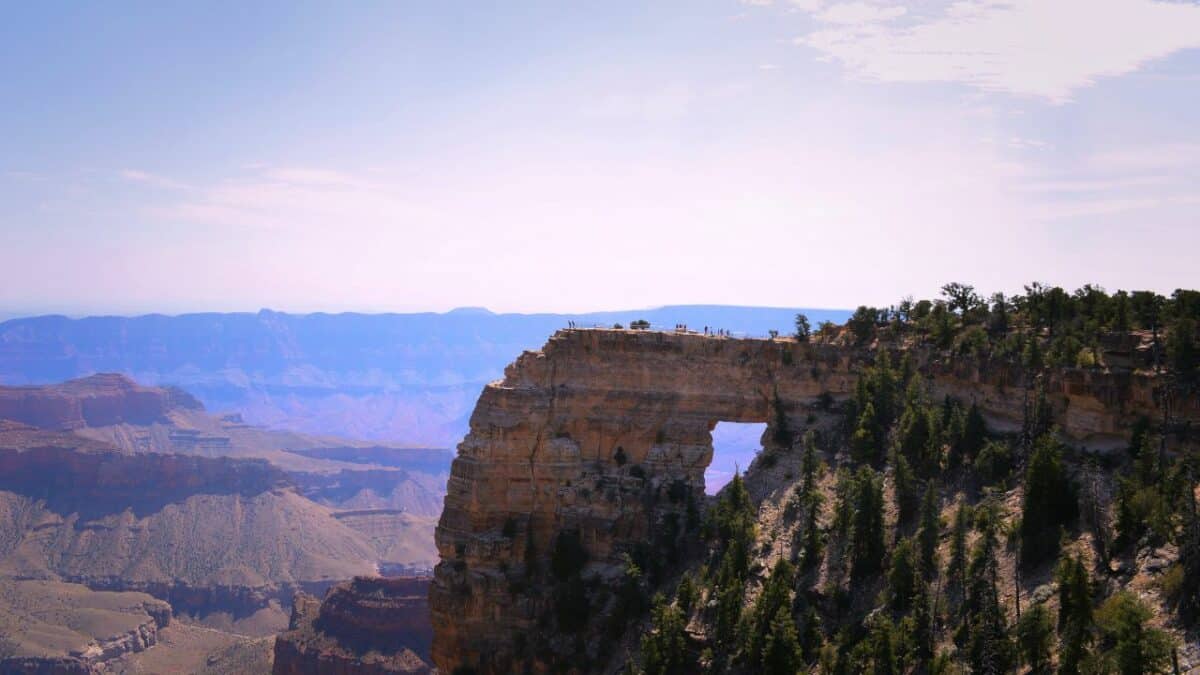
Representing the other, more distant and tough-to-approach side of the Grand Canyon, the north rim towers above its surroundings with an average height of over 8,000 feet.
Due to its location and the long distance required to reach it, North Rim is a place that only 10% of tourists venture to visit every year.
If you brave the road to the North Rim by foot, navigating the hiking routes would mean covering about 21 miles of rough terrain.
That said, if you tried to reach the North Rim by vehicle, the road network that circumnavigates the canyon would force you to endure a 220-mile trip to the same destination (If you’re adamant about reaching the North Rim from the south onboard your trusty four-wheeler, you can find the driving instructions on this page).
There is a single lodge at the North Rim – Grand Canyon Lodge.
Inside this establishment, you will find a saloon, a small post office, a restaurant, and a visitor center where you can get more information about the current state of the canyon and its history.
North Rim and its facilities are notably closed for the winter, so do not plan a trip to these parts during this season.
The local authorities only grant rare access to backpackers, skiers, and snowshoers during the winter by issuing a special wintertime backcountry permit.
This map has got you covered for a better understanding of services, roads, and where everything is in and around the North Rim.
In the section below, I’ll discuss the best-dispersed campgrounds along the North Rim.
Saddle Mt. Overlook
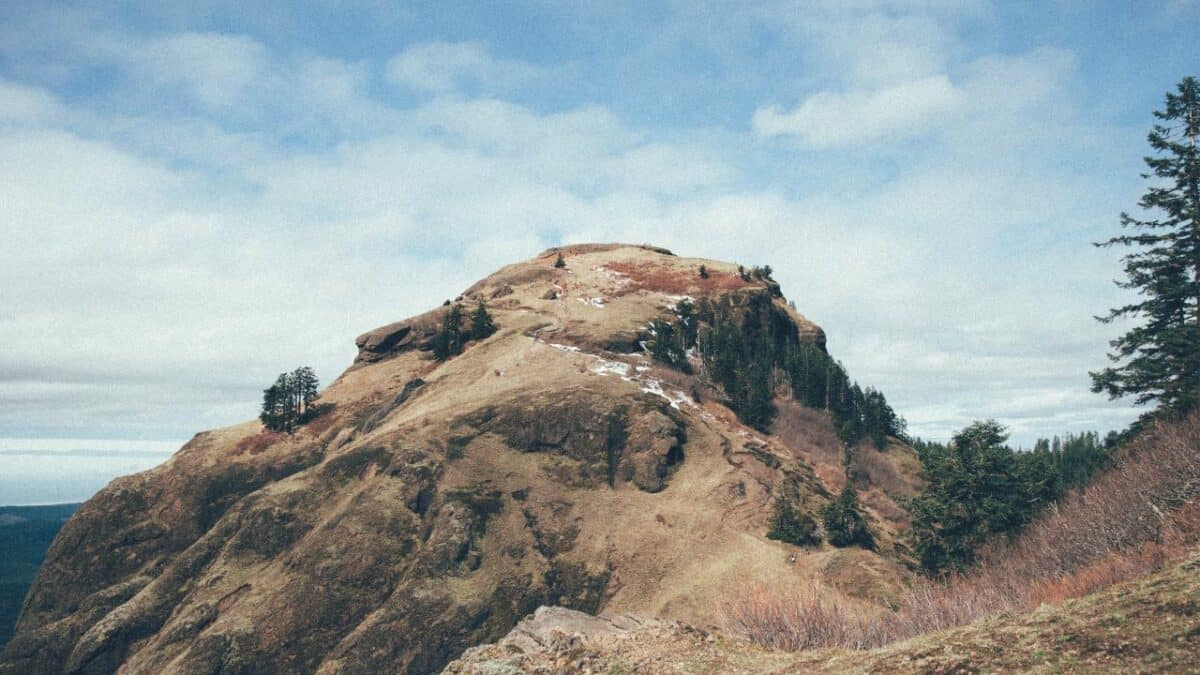
- Map
- Toilets: No
- Water availability: No
- Visitor frequency: Busy
- Distance to the North Rim Entrance Station: 18 miles
Exposed geological strata testify to what time and history do to an unsuspecting land that’s about to become a canyon. The Grand Canyon National Park is full of one fantastic camping opportunity after another.
Offering some of the most breathtaking views in the general area, Saddle Mt. Overlook is one of the most popular campgrounds near the Grand Canyon. This campground features approximately five individual sites about one hour from the North Rim Entrance Station.
This campsite has no amenities; the general area is relatively secluded and remote. For this reason, bringing your water, food, and other essential supplies is a must.
The road to this place is made of gravel and is passable for most vehicles. That said, the pieces of rock in question are relatively large, so taking it slow is a good idea – especially if you’re not approaching this place in a large, off-roader vehicle.
Since the sites are pretty clustered together, you will get little privacy. However, the majestic view of the surrounding Grand Canyon will more than make up for this.
Marble View Dispersed Camping
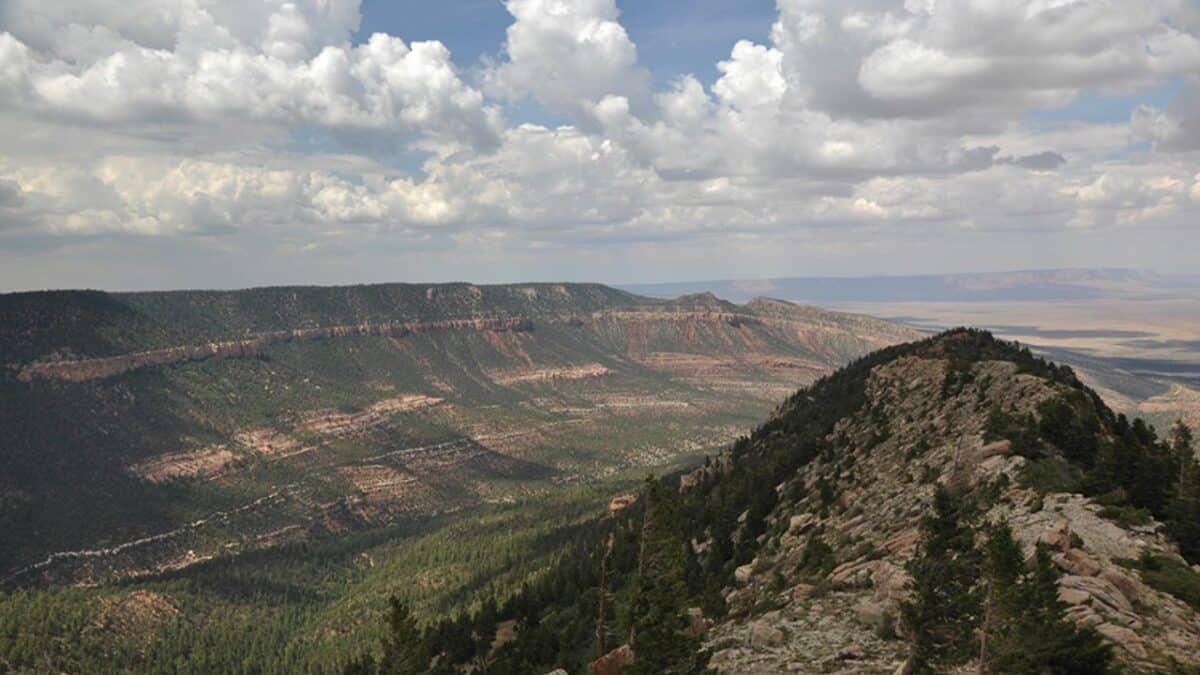
- Toilets: No
- Water availability: No
- Visitor frequency: Moderate
- Distance to the North Rim Entrance Station: 17 miles
Only 17 miles from North Rim Entrance Station, Marble View dispersed campground offers fantastic views you can observe while seated on your camping chair at one of the few sites available here.
This campground is relatively far from the others in this area, so it only gets moderately full, even at the height of the tourist season. That said, if you’re interested in exploring the northern rim of the Grand Canyon, this place can be a great starting point. Also, since this place sits just off Highway 67, you get easy access to North Rim Visitor Center.
The road to Marble View can get rough and is relatively narrow in some sections. For this reason, it is essential to drive carefully, no matter how well-equipped your vehicle is for off-roading.
Complete self-sufficiency is required here, as no services or amenities are present at the site.
Forest Service Road 611
- Toilets: No (pit toilets available at East Rim Viewpoint trailhead)
- Water availability: No
- Visitor frequency: Moderate
- Distance to the North Rim Entrance Station: 6 miles
If an exploration expedition of the National Park’s north rim is an activity that piques your imagination, setting up a tent on a campsite near Forest Service Road 611 can be an excellent starting point.
To get to this place, you must take Highway 67 southwards, toward the Grand Canyon. Next, turn onto FR 611, and you’ll find attractive campsites starting soon after. They continue for several miles further along the road.
Other than a couple of pit toilets here and there, you will find little here regarding amenities. It’s the same way with potable water. The crowds are moderate all year round, so there is no need to hurry to take up your place as you will likely find the spot you need relatively quickly.
The North Rim Entrance is only 6 miles away from it, so it’s a perfect opportunity for exploration and getting to know the surrounding nature.
If you want to learn more about this general area, checking out the crucial pieces of info at the North Rim Visitor Center might be a good idea.
Forest Service Road 22
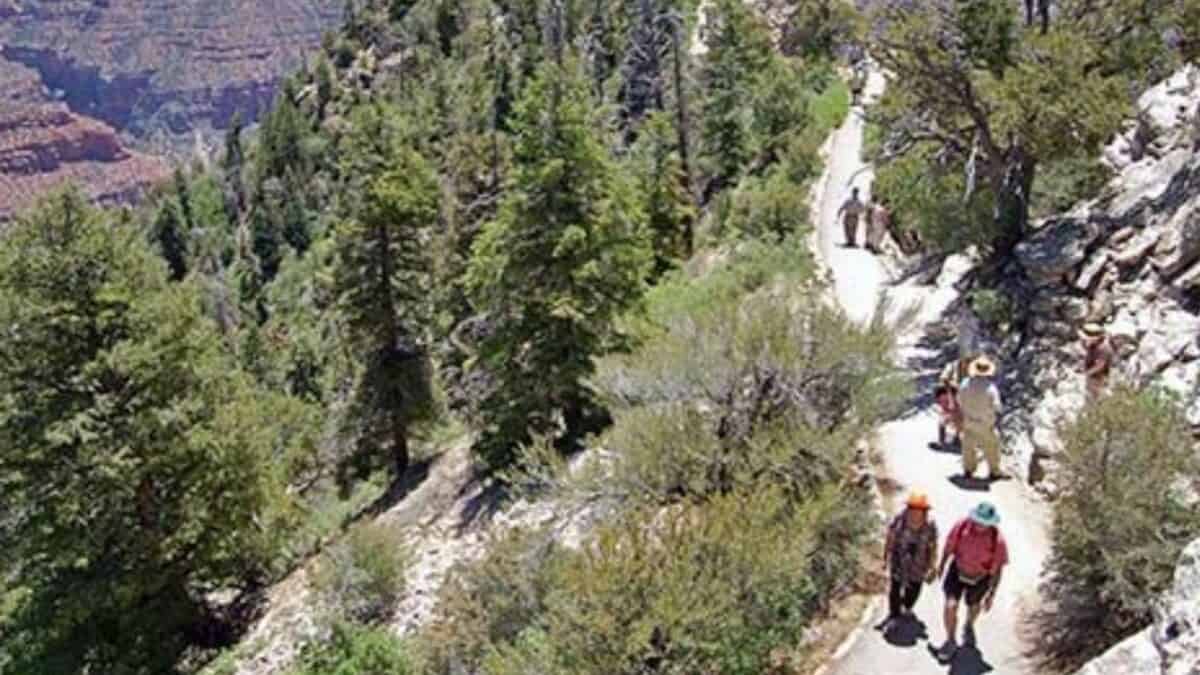
- Toilets: No
- Water availability: No
- Visitor frequency: Moderate
- Distance to the North Rim Entrance Station: 5 miles
At only 5 miles away from the North Rim Entrance Station, Forest Service Road 22 is a small campground perfect for anyone interested in gaining easy access to the entrance and the amenities you can get there.
For those interested in wandering further into the Grand Canyon or exploring the other dispersed camping locations nearby, Forest Service Road 22 can be an excellent starting point.
Many hikers and campers stop by and park in one of the pullouts of Forest Service Road 22. Although this area will only grant you access to some great views of the nearby canyon, it will give you a solid place to pitch your tent and gather supplies. The pleasant environment and proximity of the Entrance Station and its stores represent an excellent opportunity to gather your strength for a long-time exploration effort.
Another reason why many campers and hikers alike visit this campground is that it sits halfway through the entrance to the National Forest. For this reason, do expect higher vehicle traffic along this route, as everyone attempting to enter either the Grand Canyon or the forest will have to pass near this location.
This place has no amenities, so be prepared to arrive here fully equipped with all you need (You can always get some supplies at the nearby Entrance Station).
Point Sublime
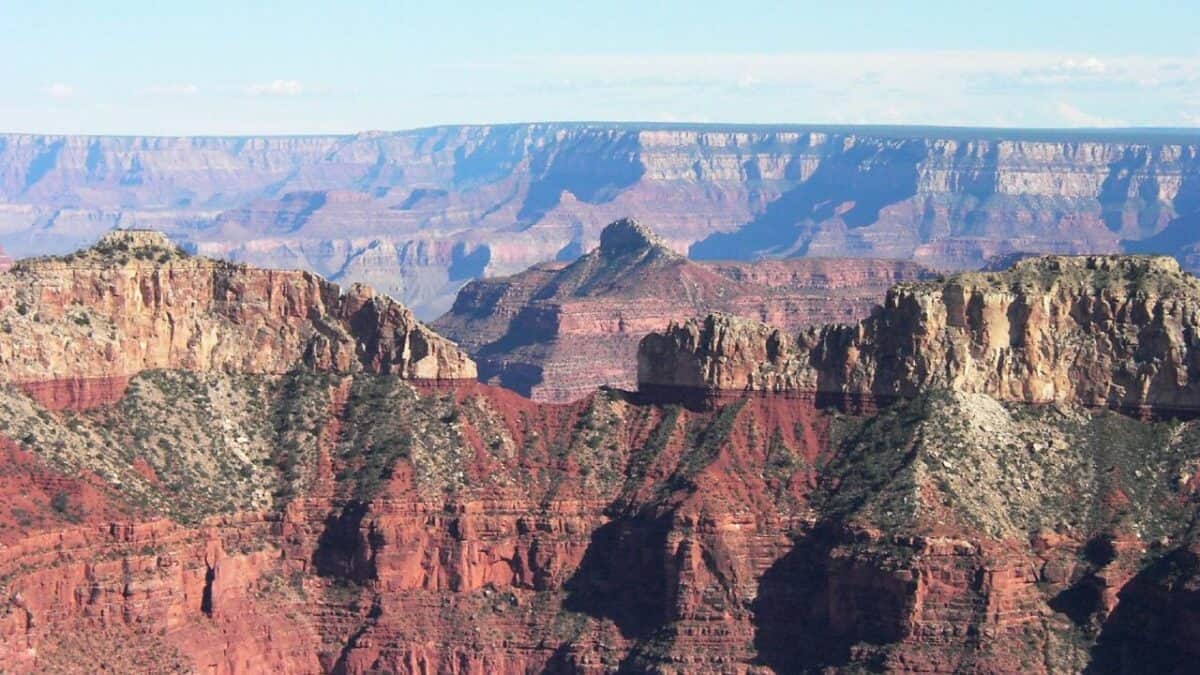
- Toilets: Yes
- Water availability: No
- Visitor frequency: Moderate
- Distance to the North Rim Entrance Station: 20 miles
Representing the most beautiful gem among the locations around the North Rim, Point Sublime is an elevated dispersed campground that more than earns its flattering name.
There are only two campsites within this campground, and accessing either is difficult. You first need to get the backcountry user permit we talked about above. The form and the charge for the permit change depending on what you’re using it for, but the fees are reasonable overall. Here is the link to the official backcountry permit application, so you can better understand how this process works.
Getting to Point Sublime is difficult, as the roads to this campground are rough and largely unkempt. Approaching this campground with a high clearance 4×4 might be the only way to do it, as any other vehicle might be unable to pull it off, and you don’t want to be left stranded here, some 20 miles away from the Entrance Station.
Amenity-wise, there is no secure potable water source around here, but there are toilets at both of the campsites.
Where to Go Next?
All in all, rightfully holding the title of one of the world’s Seven Natural Wonders, the Grand Canyon never ceases to amaze and attract droves of curious tourists from all over the world. But it’s not the only iconic dispersed camping area in Arizona. For more remote adventures, check out our guide to free dispersed camping in Sedona and our guide to free camping near Flagstaff.

I love hiking, backpacking, and camping. From the Camino de Santiago to the West Highland Way in Scotland or simply a great day hike on the weekend. Hiking refreshes me, my mind, and keeps my body reasonably fit. So far I have walked three Camino routes and many other long distance hikes in the UK, Canada, and around the rest of Europe. One of the best was my hike up Ben Nevis.

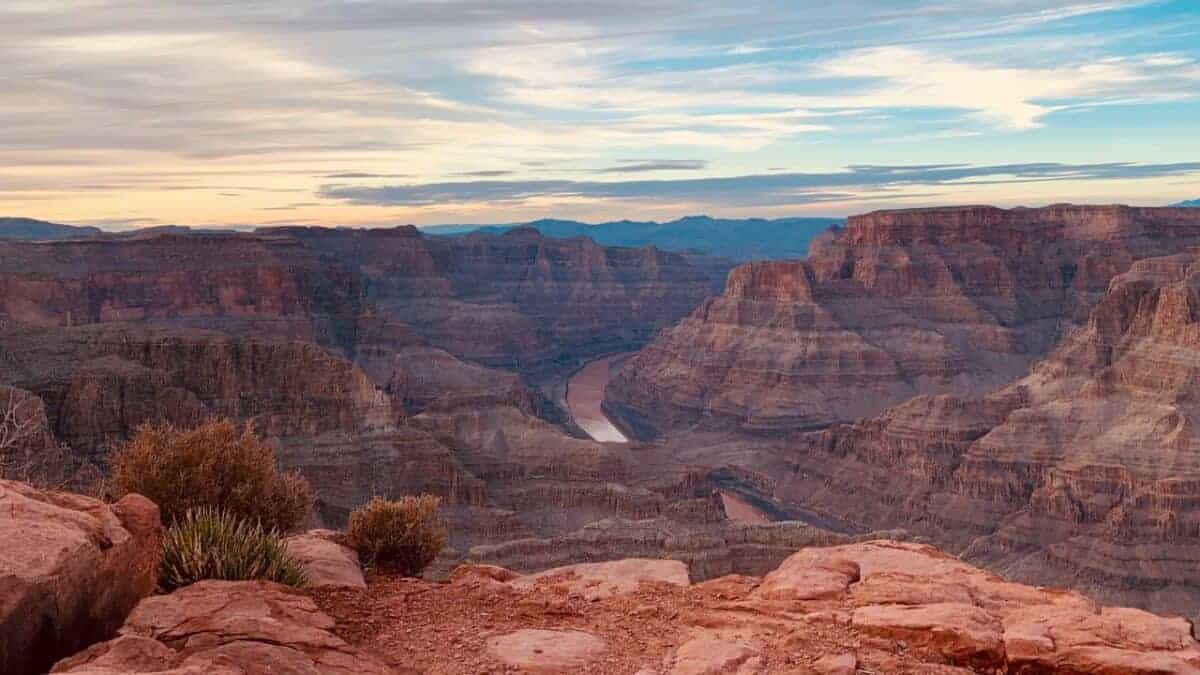
Hello and thank you for all the information. The backcountry user permit, is that only necessary, at the north rim, at point sublime? And if so, is that because the other sites are outside of a certain border around the canyon? Or do we need the permit for any site?